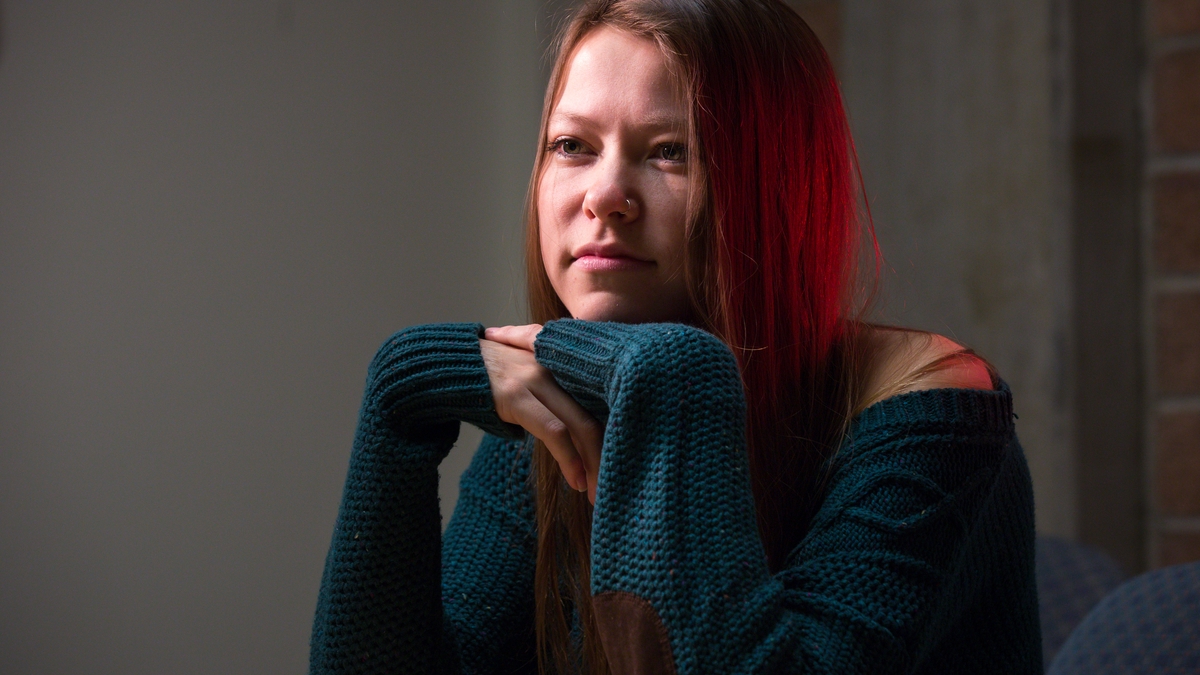A heart for misunderstood kids
ASU psychology grad says her quirkiness helps her relate to developmentally challenged children

Editor's note: This story is part of a series of student profiles that are part of our December 2015 commencement coverage.
Brianna Wang has a real heart for kids.
While at ASU, she has tested grade-school children for academic achievement, emotional stability and auditory bias, coded their behaviors for a national study and worked alongside a Nobel Prize-winning theoretical physicist.
As the 22-year-old psychology major receives her undergraduate degree from Arizona State University this month, she wants to act as an advocate for children and others with developmental disabilities who are too young to help themselves.
“As a psychology major, I feel it’s my duty to stand up for people who are in need of developmental health,” Wang said. “Often they are misunderstood by society and need a little extra attention, which I’m willing to give.”
Wang is used to giving her all. After graduating from Horizon High School in northeast Phoenix in 2012, she received an offer to attend ASU on an AIMS scholarshipThe Arizona Board of Regent’s High Honors Tuition Scholarship, or AIMS, is a university academic merit scholarship administered by the Arizona Department of Education on behalf of the Arizona Board of Regents. Qualified students who graduate from high school will receive a 25 percent in-state university base tuition scholarship.. She quickly excelled in her studies, which got noticed by Michael McBeath, a professor with the Department of Psychology in the College of Liberal Arts and Sciences, who made her a teaching and research assistant.
“I’ve known Brianna now for several years, and she is intelligent, hard-working, very quick and reliable,” McBeath said. “She has excelled in her classes, as a teacher, a researcher, a service volunteer and is a thoughtful, likeable peer.”
Wang was also selected to be the special assistant for Nobel Laureate Frank Wilczek, who worked on a project examining color blindness while visiting ASU on his sabbatical.
“That was pretty nuts,” Wang said with a laugh. “I was told very casually, ‘You’ll be working with Nobel Laureate Frank Wilczek.’ I said, ‘What? Why is he here in the first place?’ Mr. Wilczek is so smart that it’s intimidating, but that was a cool experience.”
“I’m definitely a little weird, quirky and a little offbeat, which I think helps in working with children.”
— Brianna Wang, ASU psychology graduate
In addition to maintaining a 3.89 GPA and finishing her degree in three and a half years, Wang was generous with her time when it came to service activities. She helped out in a variety of departmental events, including ASU Homecoming, Night of the Open Door and the Science of Baseball Festival, held annually in Scottsdale. And in her free time, Wang likes to jam to heavy metal on her electric guitar.
“I’m definitely a little weird, quirky and a little offbeat, which I think helps in working with children,” Wang said. “With adults you have to tone it down, but when you’re with kids you can be as weird as you want and they love it.”
The only regret Wang has is that her whirlwind academic pace means she’ll be graduating from ASU a semester earlier than she had planned.
“I’m feeling very nostalgic right now because leaving ASU is the big thing,” said Wang, who will eventually pursue a graduate degree. “A lot of my friends are excited to graduate and be done with school and all the testing. I know it sounds kind of nerdy, but I like research and learning.”
And, of course, helping people along the way, including adults.
“Psychology majors will be the ones who eventually become therapists, counselors and social workers,” Wang said. “We’re the ones who will be taking care of people, doing great work and helping them in whatever way we can. I think what I will do is very important to society.”
Photo by Charlie Leight/ASU Now
More Science and technology

National Humanities Center renews partnership with Lincoln Center for responsible AI research
The National Humanities Center has announced that Arizona State University's Lincoln Center for Applied Ethics is one of four organizations to receive funding for the second phase of their…

ASU student and hackathon enthusiast explores bridge between humanities, technology
While science and the humanities are seemingly two completely different worlds, the truth is they often go hand in hand. Mannan Anand, a second-year student at Arizona State University studying…

Advanced packaging the next big thing in semiconductors — and no, we're not talking about boxes
Microchips are hot. The tiny bits of silicon are integral to 21st-century life because they power the smartphones we rely on, the cars we drive and the advanced weaponry that is the backbone of…